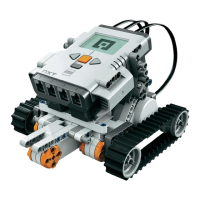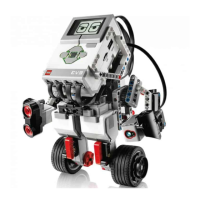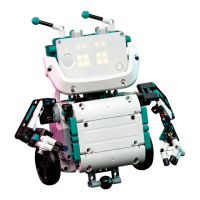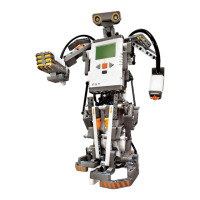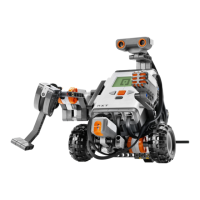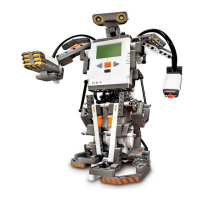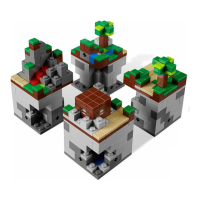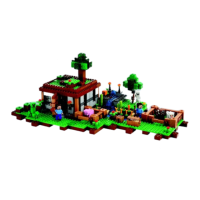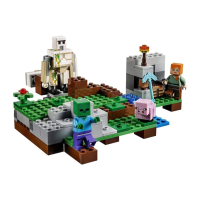Figure 11-1.
A wire brick yields two connectors like the one shown here
You can wire the cut end directly to your sensor. Each wire brick therefore yields two connectors that you can use to make your sensors compatible with the RCX. If you don't want to ruin your
perfect set, you can order additional wires from Pitsco LEGO DACTA (800-362-4308), although you'll pay dearly for them.
Copper Tubing
The studs (or "bumps") on LEGO bricks are exactly 3/16 inch in diameter. You can use 3/16" copper tubing, available at hobby stores, to replace studs in a regular LEGO brick. In essence, the
tubing acts as an electrically conductive LEGO stud. Using the tubing, you can build a sensor into a brick and use the regular "wire bricks" that come with RIS to attach the sensor to the RCX.
The basic procedure is to drill out two of the studs in a regular brick. The n you push the tubing through the holes up as far as a regular stud. The sensor or sensor circuit can be soldered to the part
of the tubing that's inside the brick. You should place the tubing in diagonally opposite studs; this ensures that an electrical connection is made no matter which way the sensor is attached to the
RCX.
Michael Gasperi's excellent web site describes this technique clearly. For details, see the "Online Resources" section at the end of this chapter.
Machine Screws
Using machine screws is a variation on the copper tubing method. Instead of replacing studs with tubing, you replace them with 4/40 machine screws, which
Page 218
have a head that is 3/16" in diameter. You can use pan head or round head machine screws, but the pan head is shaped more like a LEGO stud. Instead of drilling out the stud, just shave off the top
of it, so that it's level with the surface of the brick. Then you can drill a hole and thread the screw down into the brick. An example of this technique is shown at
http://www.kabai.com/lego/lego.
htm. Again, you should replace diagonally opposite studs so that the sensor will be connected to the RCX, regardless of the orientation of the wire brick.
You'll see an example of this technique later. In the meantime, here are some construction tips:
1. Begin by shaving off two diagonally opposite studs on the brick. A hobby tool like a Dremel rotary tool or Black and Decker Wizard works well for this purpose if you have cutting disks for
it.
2. Now make sure the screw heads are the right size. Some 4/40 machine screws have heads that are larger than a LEGO stud. You can adjust the diameter of the screw by mounting it in a drill
(with the head facing out). Turn on the drill and use a file to reduce the diameter of the head. With round head machine screws, you may also need to flatten the top of the head. You can test your
modifications by trying to place the head of the screw in the bottom of a wire brick. You should only have to push it a little bit to get it to fit.
3. Solder a short wire to the tip of each screw before you put the screws in the brick. There are two very good reasons for this. It takes a lot of heat to solder on to the screws, so you don't want to
either melt the plastic around the screws by soldering them in-place, or burn out the sensor you're mounting by soldering it directly to the screws.
4. Thread the wires you just soldered to the screws into the holes in the top of the brick. Now turn the screws into the brick—they should thread nicely into the holes.
5. Now you're ready to mount your sensor in the brick and solder its leads to the screw wire from Step 3. Make sure to use heat sinks so you don't undo your previous work or damage the sensor.
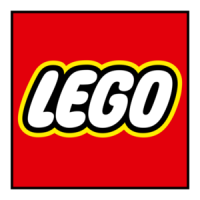
